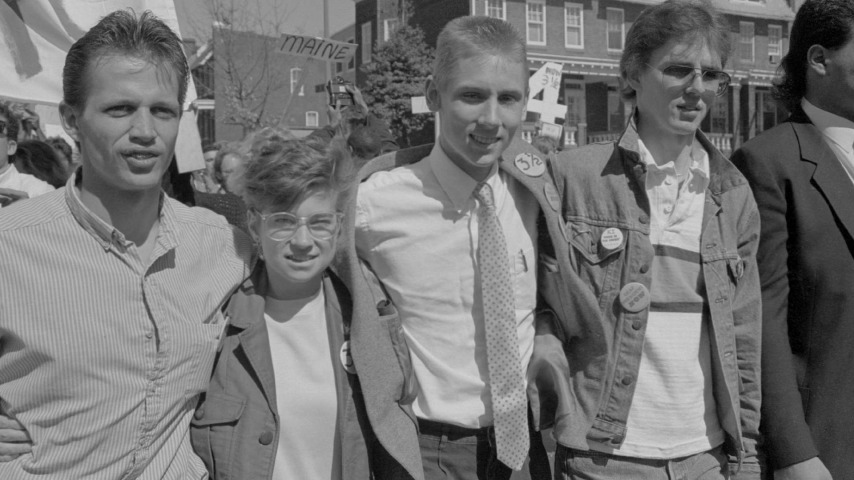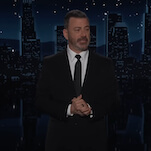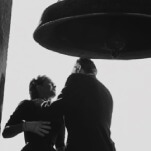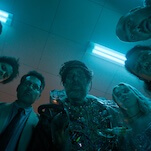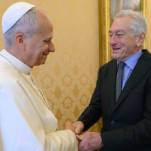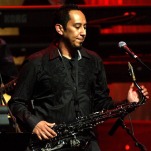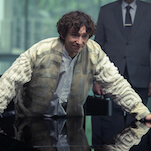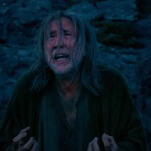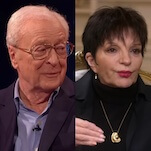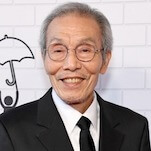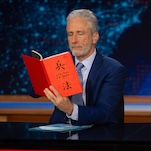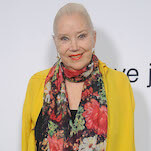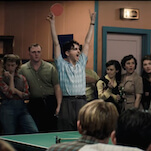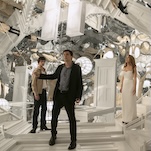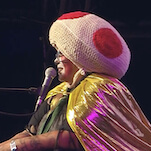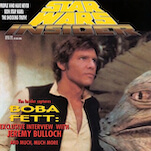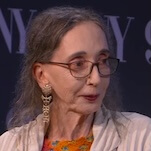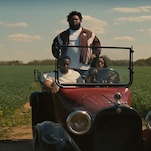The documentary Deaf President Now! features such engaging subjects and such a compelling narrative that one may wonder why they don’t end up loving the movie more than they do. As a look into one pivotal week in March 1988 at Gallaudet, the world’s sole Deaf university, in which the student body rose up in protest against an administration that forced a hearing president on them, this film doesn’t simply have a feel-good story to tell. Directed by Nyle DiMarco and Davis Guggenheim, this Sundance hit also examines the many small ways in which the Deaf community is marginalized—and, also, how that community is far from a monolith. What holds Deaf President Now! back, though, are the same modern documentary conventions that should guarantee the movie a broader audience, choices which tend to undermine the power of this crucial moment in Deaf history.
Founded in 1864, Gallaudet (located in Washington, D.C.) caters to Deaf students, but for its first 124 years, the university was never led by a Deaf president. In the spring of 1988, students hoped that trend would end, with two viable Deaf candidates in the running. But the largely hearing board of trustees—led by Jane Spilman, a stubborn, entrenched administrator who didn’t even know how to sign—had other ideas, announcing that Elisabeth Zinser, a hearing woman who was vice chancellor of academic affairs at the University of North Carolina at Greensboro, with a background in nursing, would become the new president.
To explain what happened next, DiMarco (who is Deaf) and Guggenheim (who is hearing) turn to the “Gallaudet Four,” the leaders of the student protests, who didn’t always see eye to eye on how to bring about change at their school. Interviewed separately, Bridgetta Bourne-Firl, Jerry Covell, Greg Hlibok, and Tim Rarus appear on camera, their signing interpreted through voiceover. But there are times when Deaf President Now! doesn’t rely on interpreters, trusting that hearing viewers will understand what its subjects are saying simply by noticing their body language and facial expressions. It’s one of this film’s slier points: The gulf between the Deaf and the hearing isn’t so wide, and for once the hearing have to do the extra work to bridge that gap.
Quickly, Deaf President Now! illustrates how different these four are. Covell, an outspoken rabble-rouser, was a cool, rail-thin college student who, as he admits, is now an overweight middle-aged guy, though still incredibly fiery. Bourne-Firl rubbed some the wrong way because, despite being an advocate for Deaf rights, she also was an ardent feminist, making classmates wonder which cause mattered more to her. Rarus, who has several generations of Deaf family members, was tired of being told it was best to accept the status quo, while Hlibok (who had just been elected student body president) became the group’s spokesman, even though his peers—especially Covell—wondered if he had the necessary assertiveness to take on the board.
DiMarco and Guggenheim draw from a wealth of archival footage, which helps make the nearly 40-year-old protests seem sufficiently present-day, although those images are sporadically supplemented with creaky dramatic recreations. But this fairly straightforward documentary’s most valuable asset is the Gallaudet Four’s reminiscences. It’s easy to envision the young firebrands Bourne-Firl and Covell used to be, whereas Hlibok remains far more even-tempered. Deaf President Now! suggests that this movement needed disparate temperaments in order to succeed, and that maybe the Gallaudet Four’s sometimes-clashing personalities influenced one another—for instance, encouraging Hlibok to become a bolder leader.
Laudably, the filmmakers bring the Deaf community out of the shadows by, literally, putting their subjects center stage. Hearing viewers get an expressive sense of the physicality and emotion conveyed through the signing on display, the subjects’ arm motions and reactions adding extra emphasis to their words. Not surprisingly, the passionate Covell requires a wider film frame because his signing is so demonstrative. (At one point, he even accidentally smacks the overhead boom mic.) Others sign much “smaller,” a mirroring of their less-forceful personalities, with Rarus recalling how his Deaf grandfather pressured him into hiding his deafness by not making his signing too noticeable.
Deaf President Now! cuts deepest when it educates the hearing on the nuances of Deaf culture—and also the fissures within the community. The documentary’s fifth crucial subject is I. King Jordan, who was a dean at Gallaudet and one of the two Deaf presidential candidates. Born hearing, Jordan became Deaf after a motorcycle accident, but that didn’t automatically earn him the respect of the university’s students. (As one student puts it, Jordan is Deaf but not “Deaf Deaf.”) The Gallaudet Four, supplemented by period interviews, illuminate just how often the Deaf have felt misunderstood, even by those with seemingly good intentions. To that end, the audience learns that among the students’ objections to Zinser was that she offered to “help” them—offensive terminology that creates the impression that the Deaf are somehow “damaged” or “less than.” Add to that, Spilman reportedly said that part of her reasoning for not selecting a Deaf president was that “Deaf people are not ready to function in a hearing world,” an accusation she later disputed.
As the protests escalate—starting with the students boldly barring the administration from entering campus—the film gains momentum, finding an ideal villain in the aloof Spilman and setting the stage for a classic David-versus-Goliath story. But the directors sometimes oversell that story, resorting to gimmicky narrative tricks like manipulative song choices to goose audience reaction. (Repurposing Public Enemy’s “Fight The Power” for the Deaf movement is provocative. Carting out Electric Light Orchestra’s “Mr. Blue Sky” is just lazy.)
Consequently, the documentary’s glossy approach makes this hymn to resistance and self-empowerment occasionally feel cookie-cutter—just one more easily digestible, crowd-pleasing underdog tale. Soon, it wasn’t just the Gallaudet student body railing against the administration: Deaf individuals across the globe took up the cause, unified in their anger after generations of being underestimated. Deaf President Now! honors that struggle, even if the polished packaging doesn’t always possess a similar righteous fury.
Directors: Nyle DiMarco, Davis Guggenheim
Release Date: May 16, 2025 (Apple TV+)
